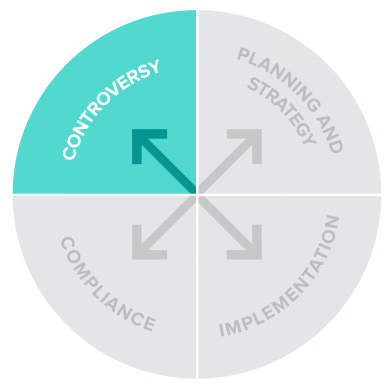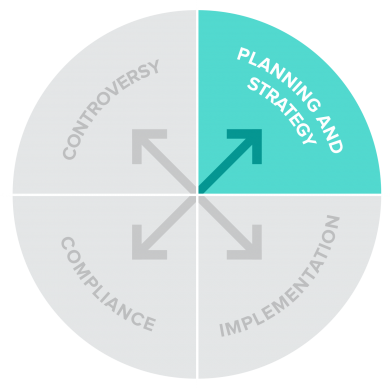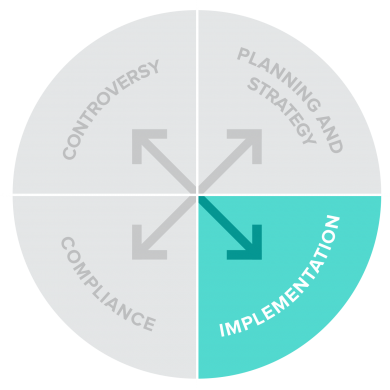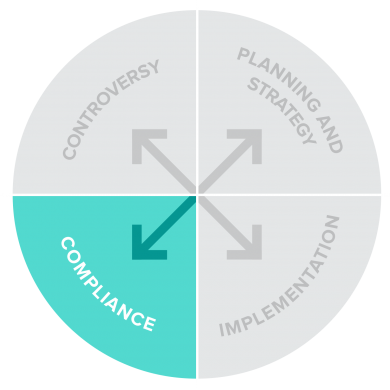Transfer Pricing
The increasing complexity of a company’s global footprint, coupled with the heightened scrutiny worldwide following the release of the Base Erosion and Profit Shifting (BEPS) Guidelines from the OECD, transfer pricing has become the most contentious area of international tax.
Transfer Pricing is commonly cast as both “art and science” yet that does not mean that the solutions need to be as confusing as the issue. Our aim is to “demystify” transfer pricing for our clients and empower them to do as much of the work as feasible with their in-house resources by leveraging the expertise of our seasoned advisors, avoiding the inherent pitfalls to relying on software solutions. Our leaders have a consistent, reliable reputation in the transfer pricing industry spanning more than 30 years for facilitating transformation from complex, perhaps outdated, structures into manageable, defendable transfer pricing systems that adapt to the dynamic demands of a global supply chain.

Controversy
Even the most solid transfer pricing structure will face inquiry by a tax authority at some point. We have walked in your shoes on audit and bring the experience to partner with you and prepare for an audit strategy through reviewing the contemporaneous information, filling in the gaps for what may exist, and unpacking the value chain story as it existed at the time of the transaction. To add practical value, our global team is also able to close the language gap with the local tax authorities in Spanish, French, and Dutch as well as English, which has proven helpful in foreign audit negotiations. Our expertise in understanding the interconnected nature of tax transformation and business strategy brings value to the discussion and gives you credibility at the negotiating table. We also have extensive advisory experience in all routes of controversy defense.

Planning and Strategy
In today’s tax environment, multinationals are focused on aligning their business and tax models. Best practice involves consideration of a "Plan B" in any strategy, particularly in international tax given the sweeping changes that are occurring in tax regimes around the world. It is critical that the tax structure reflects the economic reality of the business but maintains the flexibility for the business to maintain operational independence as a priority.

Implementation
Developing transfer pricing documentation is only one of many milestones in the best practices journey of a tax department in creating a solid transfer pricing framework. We believe in the power of partnership and are committed to aligning with our clients’ needs, resources, and risk profile to bring value in the areas most relevant to them. Bringing our team of both former in-house transfer pricing professionals and seasoned, global transfer pricing experts, our unique team is equipped to help you from the design stages of transfer pricing strategy through to the most practical steps of implementation.
Having analyzed millions of transactions, covering trillions of dollars since our launch, the Aptis team members have also sat in your chair as an in-house transfer pricing or tax professional and understand the challenges of increasingly complex business flows, aggressive tax authorities, burdensome compliance requirements and the inevitable mismatch between the issues and the resources to resolve them.
With our “Transition Champion” approach, our former in-house champions are ready to come alongside an in-house transfer pricing professional to create a meaningful, implementable game plan with a call to action.

Compliance
Our team has been involved in transfer pricing since the formative days, having conducted the economic analysis accepted in court for one of the first transfer pricing cases, representing Yamaha Motors US in 1993, and operated under the first regulations in the world with the 1994 US Internal Revenue Code (IRC) 482 Temporary Regulations.
Our aim is to take the depth of our experience to help your team create a sustainable transfer pricing strategy, supported by solid, consistent documentation, to avoid potential controversy and costly penalties. We will partner with you to synthesize the complex facts of your business in the industry’s perspective most relevant to understanding the markets in which you operate, the intercompany relationships that surround the relevant transactions, and how those relationships impact the organization in narrating your value chain story. The OECD model is intended to frame your company's value chain story through the key elements of value creation: Development, Enhancement, Maintenance, Protection, and Exploitation (“DEMPE”).
Achieving a holistic, well-constructed analysis of this kind is no small task. Creating this analysis reliably and consistently for consecutive tax years will be a major endeavor, perhaps a herculean one for taxpayers with challenging financial reporting systems. The narrative in support of this exercise in both master files and local files must go beyond the common early BEPS implementation strategies of “less is more” to ensure that a balanced, cohesive story has been memorialized and the elements of DEMPE—development, enhancement, maintenance, protection, and exploitation, both digital and traditional—have been well grounded in the economics of a solid transfer pricing strategy. This is your opportunity to position your company to maintain the value inherent in its tax structure: Aptis has reshaped the framework of the Master file and Local file to tell a more cohesive and intentional story while streamlining the complexity of a multijurisdictional documentation package.